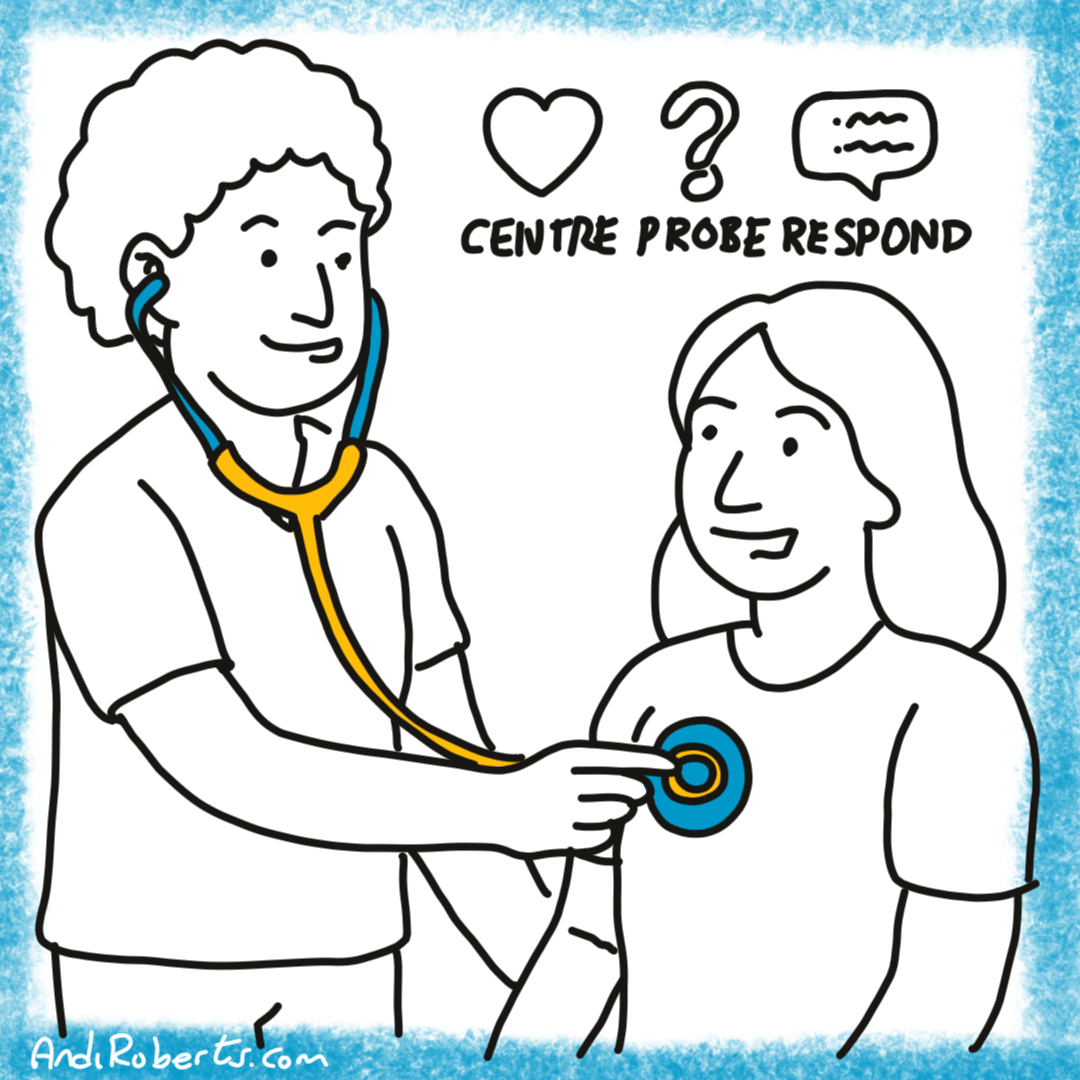Saying no at work is hard. We keep saying yes out of habit, politeness, or fear of conflict. Yet every unnecessary yes carries a cost: stress, burnout, and strained relationships. The deeper challenge is not simply how to say no at work, but how to do so without damaging relationships, trust, or respect.
“If you cannot say no, then your yes has no meaning.”
– Peter Block
In today’s workplaces, yes is the default. We say it to keep peace, to avoid disappointing others, or because the relentless pace leaves no space to pause. Harvard Business Review reports that overcommitment is now a primary driver of burnout, with employees trying to “do it all” but often delivering less on what matters most (Harvard Business Review, 2021). McKinsey adds that unsustainable workloads undermine trust and performance, fuelling cycles of exhaustion (McKinsey, 2022).
The real question is: what makes a no meaningful? It is not just prioritising tasks, but learning to say no in ways that preserve dignity, honour commitments, and protect energy for the work that matters most. A sustainable yes requires the courage of a thoughtful no.
One way to practise this is through a simple rhythm: acknowledge • pause • respond.
Step 1: Acknowledge
Every no begins with connection. Acknowledging the request, such as “thanks for thinking of me” or “I appreciate you asking”, honours the person even if you cannot accept their request.
Why it works: Politeness theory shows that acknowledgement protects dignity in conversation, reducing the sting of refusal (Brown and Levinson, 1987). Gratitude also activates prosocial networks in the brain, increasing empathy and cooperation (Algoe, 2012). Beginning with acknowledgement signals that your no is about commitments, not about disregard.
Examples:
• “Thanks for thinking of me.”
• “I really appreciate you asking.”
• “Glad you brought this up, it’s important.”
Step 2: Pause
Resist the reflexive yes. A breath, a pause, or asking for time creates the space to make a deliberate choice.
Why it works: Quick yeses often arise from stress or fear of conflict. A pause re-engages the prefrontal cortex, the brain’s decision-making centre, so choices align with values rather than autopilot (Baumeister et al., 2007). Decision fatigue research shows that delayed responses are often wiser than instant ones.
Examples:
• “Let me check what I’m already committed to.”
• “Can I come back to you later today?”
• (Or simply: breathe, then respond.)
Step 3: Respond – eight ways of saying no with meaning
No is not just a word, it is a stance. Each way of saying no carries a different quality of respect, integrity, and stewardship. Below are eight stances, ordered to flow from personal stewardship to organisational responsibility.
1. Foresight
The easiest no is often the one spoken early. By naming limits before requests arrive, we reduce the need for refusals later. Proactive clarity builds reliability: colleagues know what to expect and do not waste energy hoping for more than you can offer. Many of us hesitate to declare limits upfront, fearing it will make us look unhelpful. Yet foresight is a form of respect, it helps others plan well and prevents disappointment.
Research supports this. Detert and Edmondson (2011) show that proactive communication about constraints strengthens trust and reduces conflict. Instead of avoiding tension, foresight creates steadiness and psychological safety: others can trust that your commitments are real and your signals reliable.
From a leadership perspective, foresight is stewardship. It recognises that your time and energy are finite resources to be managed for the sake of the whole. By declaring your boundaries early, you invite others to share accountability for how work is allocated.
Examples:
• Manager to team: “Over the next two weeks, I’ll be focused on the product launch, please do not expect quick turnarounds.”
• Leader to peer: “Just so you know, I will not be available for cross-team projects this quarter.”
• Leader to line manager: “I’ll be at full stretch during budget season, so I cannot commit to new initiatives in that period.”
2. Clarity
A clear no is deceptively simple. Many of us avoid it, preferring softer words such as “maybe”, “I’ll try”, or “let me see”. But vagueness wastes more energy in the long run. It leaves the other person uncertain, forces them to follow up, and often leads to frustration when the half-promised yes collapses.
Eskin (2003) found that direct refusals, delivered respectfully, were met with more respect than ambiguous ones. Clarity reduces cognitive load: everyone knows where they stand and can move forward. Even when the message is unwelcome, the certainty it provides is valued.
Clarity is not bluntness. It is a form of care: you are willing to risk the short-term discomfort of a no in order to preserve long-term trust. A culture of clarity prevents burnout and builds mutual respect, where people know that words can be relied upon.
Examples:
• Manager to team: “No, we will not add new features this sprint. Let’s finish what we committed to.”
• Leader to peer: “No, I cannot co-chair that event. My schedule is already full.”
• Leader to line manager: “No, I cannot meet the additional reporting deadline without moving another deliverable.”
3. Ownership
A no has greater weight when we stand in it fully. Too often we hide behind external excuses such as “they will not let me” or “the calendar is against me”. While these may be true, they shift responsibility away from us. “I” language reclaims that responsibility.
Assertiveness research shows that “I” statements strengthen clarity and reduce defensiveness (Speed, Goldstein and Goldfried, 2018). When we own our no, others see us as accountable rather than evasive. It models maturity: you are not blaming, but choosing.
For leaders, ownership is contagious. When you take responsibility for your boundaries, you create permission for others to do the same. It breaks the cycle of silent resentment and hidden overwork. An owned no invites a culture where agency is normal, not the exception.
Examples:
• Manager to team: “I do not have the bandwidth to join every stand-up. I will attend twice a week.”
• Leader to peer: “I need to protect my evenings, so I will not join late calls.”
• Leader to line manager: “I have decided to focus my time on mentoring the new directors, so I cannot take on another committee.”
4. Purpose
Sometimes a no is bigger than capacity. It is about protecting what really matters. Purpose-driven refusals link your boundary to values, goals, or standards that serve the whole. They make it clear that you are not saying no to the person, you are saying yes to the work that sustains integrity.
Deci and Ryan’s (2000) Self-Determination Theory shows that decisions tied to values are more respected and motivating. Purpose-anchored refusals shift the conversation from personal reluctance to collective responsibility.
Over time, this stance builds credibility. People see that your choices are not arbitrary but consistent with deeper commitments. The no becomes part of a narrative of integrity: you are reliable not because you say yes to everything, but because your yes means something.
Examples:
• Manager to team: “To maintain customer trust, I cannot approve skipping testing steps.”
• Leader to peer: “To stay aligned with our diversity targets, I will not join an all-male panel.”
• Leader to line manager: “To protect delivery quality, I cannot take on another project until this one stabilises.”
5. Anchoring
Not every no needs to be spoken directly. Sometimes the most graceful way is to name the commitment you are already honouring. Anchoring reframes refusal as fidelity. By saying yes to something meaningful, you implicitly decline the rest.
Tversky and Kahneman’s (1981) research on framing shows that people respond more positively when the emphasis is on what is being upheld. Anchoring demonstrates steadiness: you are not rejecting out of reluctance, but because you are already deeply invested elsewhere.
This stance cultivates trust. Others see that your boundaries are not about avoidance but about loyalty to what matters. It sends the signal: when you say yes, it has weight.
Examples:
• Manager to team: “I am prioritising our onboarding this month, so I will not lead additional projects right now.”
• Leader to peer: “My focus is on expanding our regional presence, so I cannot co-lead the internal task force.”
• Leader to line manager: “I am dedicating my time to stabilising the new system, which means I cannot add more reporting cycles.”
6. Context
Adding context transforms no into part of a shared story. A refusal without explanation can feel abrupt or arbitrary. A refusal with context conveys thoughtfulness and respect.
The classic “because” study (Langer, Blank and Chanowitz, 1978) shows that even minimal reasons increase acceptance of refusals. Procedural justice research (Colquitt et al., 2001) confirms that transparency enhances perceptions of fairness, even if the outcome is unchanged.
This stance is not about over-justifying. It is about offering enough of the why to preserve dignity. By sharing context, you show the other person that your decision was made carefully, not carelessly. It keeps the relationship open, even when the answer is no.
Examples:
• Manager to team: “We cannot add more interns this term because our mentors are already at capacity.”
• Leader to peer: “I cannot join your committee because I am committed to the regional review process.”
• Leader to line manager: “I cannot attend the off-site because I will be leading the client visit that day.”
7. Shared responsibility
When requests pile up, it is tempting to carry them silently. But silence reinforces a culture of overload. A healthier move is to make trade-offs explicit: “If I do this, what should give way?” This reframes no from an individual act to a collective negotiation.
Fisher, Ury and Patton (2011) show that surfacing trade-offs creates fairness and sustainability in agreements. Shared responsibility prevents the illusion that more can always be added without consequence. Instead, it creates dialogue about priorities.
This stance is deeply relational. It tells the other person: “I am willing to help, but not at the cost of pretending resources are endless.” It builds trust by making the hidden visible and inviting others to co-own the challenge.
Examples:
• Manager to team: “If we take on this new client request, which of our current tasks should we pause?”
• Leader to peer: “I can cover your presentation, but then I will need your support on budget prep.”
• Leader to line manager: “I can join the task force, but then I will need clarity on which existing priorities to pause.”
8. Redirection
Even when you cannot take something on, you can still serve the larger purpose by pointing the request to the right place. Redirection says no without shutting down progress.
Blau’s (1964) social exchange theory reminds us that reciprocity is not only about doing tasks ourselves, it is also about ensuring the task finds the right home. Redirection signals that you care about the outcome, even as you protect your own commitments.
This stance demonstrates that boundaries and service can coexist. You are not abandoning the request, but guiding it toward where it can succeed. In doing so, you model a culture where no is not the end of the conversation, but a way of keeping the whole system moving.
Examples:
• Manager to team: “I cannot handle that escalation, please bring it to Priya; she has authority.”
• Leader to peer: “I am not the best fit for your data request, James in analytics can turn it faster.”
• Leader to line manager: “I cannot lead this initiative, but Maria has both the expertise and bandwidth.”
Closing thoughts
Boundaries are not barriers. They are conditions that give our yes its meaning.
The Society for Human Resource Management (2022) highlights boundary-setting as a critical leadership skill for building trust and preventing burnout. Harvard Business Review echoes this: “The best leaders protect their people’s focus, even when it means saying no” (Harvard Business Review, 2019).
The invitation is simple: treat no as an act of stewardship. It honours your commitments, protects your energy, and preserves the relationship. A no, spoken with care, ensures that your yes is genuine.
“If you cannot say no, then your yes has no meaning.”
Reflection questions:
• Where in your work do you most struggle to say no?
• Which stance of refusal feels most natural to you, and which feels most uncomfortable?
• How might your team’s culture change if no was seen not as rejection, but as contribution?
Do you have any tips or advice on saying no or refusing requests?
What has worked for you?
Do you have any recommended resources to explore?
Thanks for reading!
References
Algoe, S. B. (2012) ‘Find, remind, and bind: The functions of gratitude in everyday relationships’, Social and Personality Psychology Compass, 6(6), pp. 455–469. https://doi.org/10.1111/j.1751-9004.2012.00439.x
Baumeister, R. F., Vohs, K. D., Tice, D. M. (2007) ‘The strength model of self-control’, Current Directions in Psychological Science, 16(6), pp. 351–355. https://doi.org/10.1111/j.1467-8721.2007.00534.x
Blau, P. (1964) Exchange and power in social life. New York: Wiley.
Brown, P. and Levinson, S. C. (1987) Politeness: Some universals in language usage. Cambridge: Cambridge University Press.
Colquitt, J. A., Conlon, D. E., Wesson, M. J., Porter, C. O. L. H. and Ng, K. Y. (2001) ‘Justice at the millennium: A meta-analytic review of 25 years of organizational justice research’, Journal of Applied Psychology, 86(3), pp. 425–445. https://doi.org/10.1037/0021-9010.86.3.425
Deci, E. L. and Ryan, R. M. (2000) ‘The “what” and “why” of goal pursuits: Human needs and the self-determination of behavior’, Psychological Inquiry, 11(4), pp. 227–268. https://doi.org/10.1207/S15327965PLI1104_01
Detert, J. R. and Edmondson, A. C. (2011) ‘Implicit voice theories: Taken-for-granted rules of self-censorship at work’, Academy of Management Journal, 54(3), pp. 461–488. https://doi.org/10.5465/amj.2011.61967925
Eskin, M. (2003) ‘Self-reported assertiveness in Swedish and Turkish adolescents: A cross-cultural comparison’, Scandinavian Journal of Psychology, 44(1), pp. 7–12. https://doi.org/10.1111/1467-9450.00315
Fisher, R., Ury, W. and Patton, B. (2011) Getting to yes: Negotiating agreement without giving in. 3rd edn. New York: Penguin.
Harvard Business Review (2019) ‘Stop overcommitting at work’, Harvard Business Review, 12 March. Available at: https://hbr.org/2019/03/stop-overcommitting-at-work (Accessed: 24 September 2025).
Harvard Business Review (2021) ‘Beyond burnout: Fixing the worker crisis’, Harvard Business Review, February. Available at: https://hbr.org/2021/02/beyond-burnout-fixing-the-worker-crisis (Accessed: 24 September 2025).
Langer, E. J., Blank, A. and Chanowitz, B. (1978) ‘The mindlessness of ostensibly thoughtful action: The role of “placebic” information in interpersonal interaction’, Journal of Personality and Social Psychology, 36(6), pp. 635–642. https://doi.org/10.1037/0022-3514.36.6.635
McKinsey & Company (2022) ‘Addressing employee burnout: Are you solving the right problem?’, McKinsey Quarterly, January. Available at: https://www.mckinsey.com/capabilities/people-and-organizational-performance/our-insights/addressing-employee-burnout-are-you-solving-the-right-problem (Accessed: 24 September 2025).
Society for Human Resource Management (2022) ‘Setting boundaries at work: Why it matters’, SHRM. Available at: https://www.shrm.org/resourcesandtools/hr-topics/employee-relations/pages/setting-boundaries-at-work.aspx (Accessed: 24 September 2025).
Speed, B. C., Goldstein, B. L. and Goldfried, M. R. (2018) ‘Assertiveness training: A forgotten evidence-based treatment’, Clinical Psychology: Science and Practice, 25(1), pp. 1–14. https://doi.org/10.1111/cpsp.12216
Tversky, A. and Kahneman, D. (1981) ‘The framing of decisions and the psychology of choice’, Science, 211(4481), pp. 453–458. https://doi.org/10.1126/science.7455683





Leave A Comment